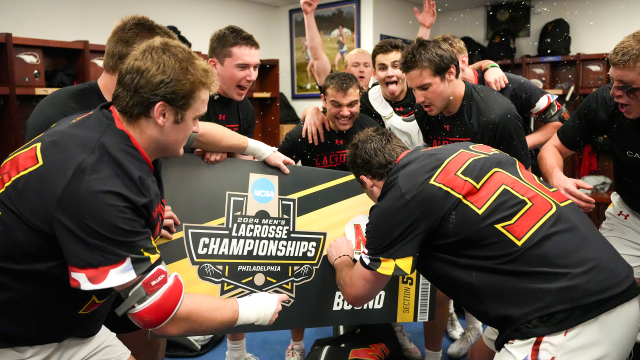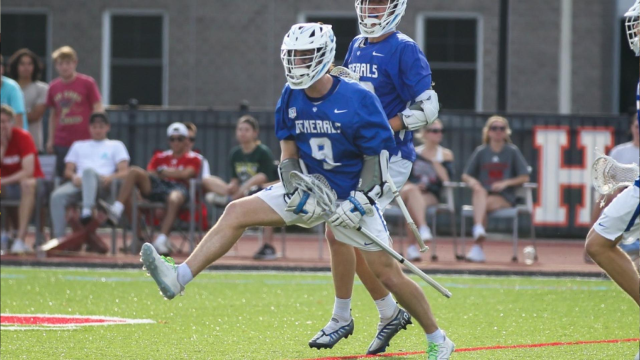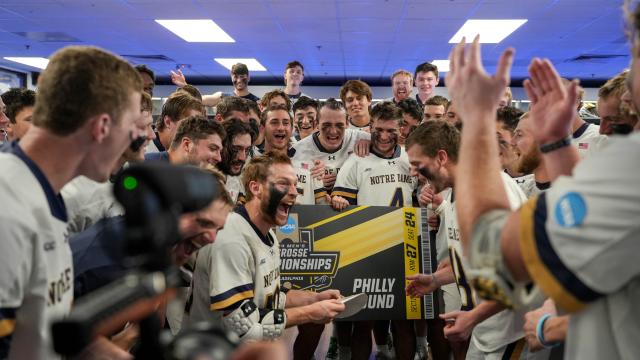12:00 PM
May 19


12:00 PM
May 19


02:30 PM
May 19


03:00 PM
May 24


05:30 PM
May 24


© 2024 USA Lacrosse. All Rights Reserved.
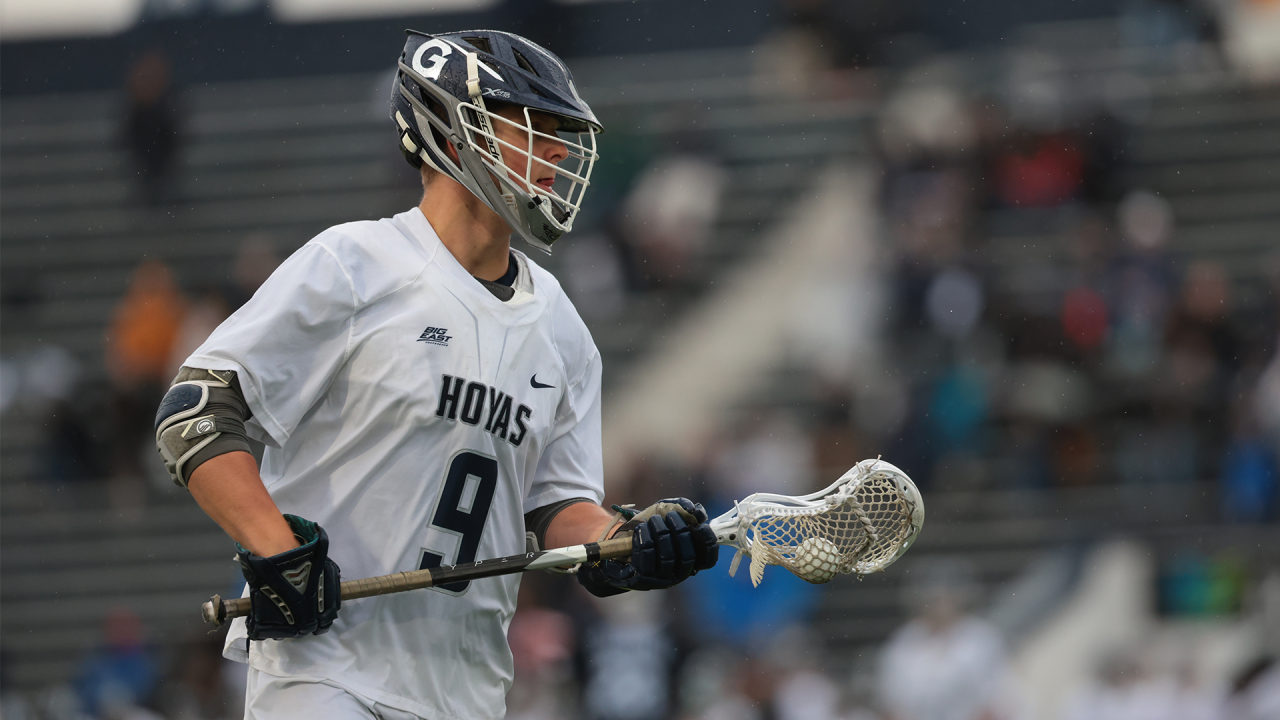
The NCAA lacrosse committee didn’t need much time to finish off its work Sunday after the Ivy League final filled in the final bit of data in the 3 p.m. hour.
Besides, the biggest curveball had unfolded the previous night when Michigan snatched a bid away from a second Ivy League team when it pounded Penn State in the Big Ten title game.
“That was probably our biggest challenge,” said Matthew Colagiovanni, the committee chair and the deputy AD at Rutgers. “The Michigan bid-steal obviously knocked somebody out that normally would have had that spot.”
The five-person committee, which also includes Joe Breschi (North Carolina coach), Danie Daluisio (Ohio State assistant AD), Nick Gannon (Drexel deputy AD) and Randy Mearns (St. Bonaventure coach), didn’t have too many other surprises to deal with over the weekend.
After all, higher-seeded teams went 9-1 in conference title games. Besides Michigan’s title game blowout, the chaos for the week that resonated was crammed into games on Thursday and Friday.
It left the committee time to do plenty of side-by-side comparisons of teams, particularly when sorting out the final seeded team and the last at-large team into the field.
Colagiovanni also credited the work of the regional advisory committee, a group of 10 coaches (one from each league) that met via video conference on a weekly basis for the last month or so and also passed along feedback over the weekend.
“We did use the guidance of the advisory committee,” Colagiovanni said. “We even got their thoughts last night, so we got their final data and kind of used that as we were looking at these matchups that were so, so close. We’ve done it for the last 4-5 weeks, so it’s been helpful to get that information from those coaches.”
It led to a 17-team field that has some seeding calls that could have gone in different directions but no puzzling decisions that will be recalled for years to come.
And, of course, it got the No. 1 seed right, and that’s where this year’s bracket breakdown begins.
Notre Dame
Who else would it be? The Fighting Irish (12-1) haven’t lost since February and just mauled Virginia and Duke by a combined 34-15 margin to easily claim the ACC tournament title. Liam Entenmann is a tested postseason option in goal, and the attack of Pat and Chris Kavanagh and Jake Taylor is difficult to contain.
It’s a little early to anoint this team to be as good as last year’s national champions. After all, the Irish were in tie games in the fourth quarter against Duke, Cornell and Virginia last month, so it’s not as if it’s just been a string of blowouts.
But the gap between this iteration and Notre Dame’s super team from last year isn’t nearly as wide as it is for Duke and Virginia, and no one has played with the same level of consistency. If a team is going to knock off the Irish, it is going to have to play really well because Notre Dame isn’t going to make many mistakes.
Penn State
The Nittany Lions probably felt pretty good about their chances of landing a home game in the tournament once they crushed Maryland in the Big Ten semifinals on Thursday.
Thanks to a loss to bid-thieving Michigan and Georgetown winning the Big East, Penn State wound up not only playing on the road, but squeaking into the field with the last at-large bid.
Still, the Nittany Lions had a commendable profile, and that victory over Maryland turned out to be a major asset to get them into the field.
“They were 5-3 in the top 20, and they had three top-15 wins,” Colagiovanni said. “We felt like their best win was Maryland, but they won over Maryland, Cornell, Yale, Michigan. We looked at that. That was the rationale to it.”
Penn
There was a clump of Ivy League teams just on the outside looking in, with Penn, Cornell and (to a lesser extent) Yale having their chances spoiled by outside events and their own losses in the conference tournament.
The Quakers owned one of the best victories of the season, a road-soaked victory at Duke on March 1. It probably didn’t help that Duke lost four more times before the regular season was through, mildly devaluing that triumph each time.
It’s the second consecutive year Penn got squeezed out of the field by Michigan and Princeton earning automatic bids, though the Quakers did lose in the Ivy tournament to the Tigers in both of those years.
Denver
The Pioneers are back in the field after a two-year absence, and their reward is a date with a Michigan team that has suddenly figured things out. And should Denver turn back the Wolverines, they’ll have to fly to the Eastern time zone for the sixth time in 10 weekends and deal with either a potent Syracuse offense or a spunky Towson team playing on its own field.
If Denver can advance to the semifinals in coach Matt Brown’s first season, it will have earned it.
Saint Joseph’s vs. Virginia
What has ailed Virginia intermittently all season, even before the Cavaliers lost four in a row for the first time since 2013? An inconsistent defense.
So, to have the Hawks (12-3), winners of the Atlantic 10, roll into Charlottesville with three 30-goal scorers (Levi Anderson, Matt Bohmer and Carter Page) and an offense littered with slick sticks? It’s probably not an ideal setup for Lars Tiffany’s team.
Saint Joseph’s, with much of the same cast of characters, created all kinds of problems in an 18-16 loss at Yale in its NCAA tournament debut two years ago. The Hawks weren’t far away from pulling a surprise that day and are plenty capable of finishing the job on Saturday.
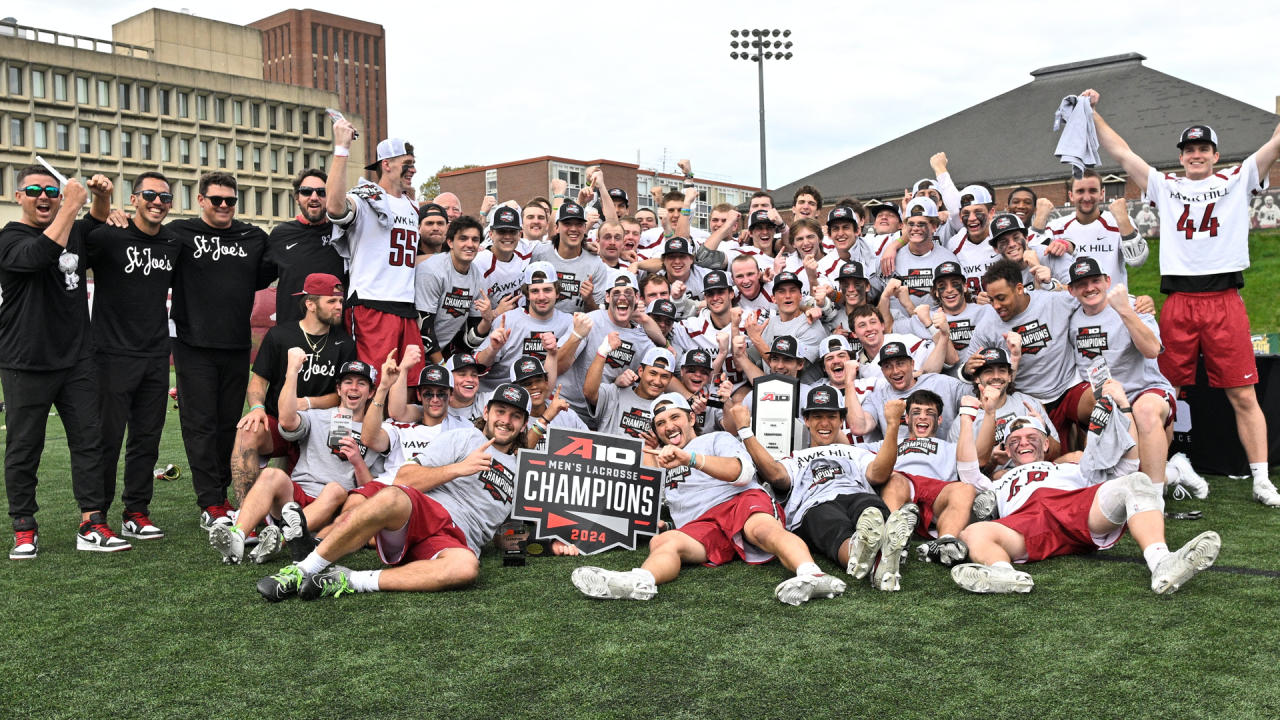
What went into deciding the No. 8 seed?
Probably the most unexpected development of the night was Georgetown landing a home game for the third consecutive year. The Hoyas won the Big East tournament for the sixth consecutive time, and it was enough to snag the last seeded slot ahead of Penn State and Princeton.
“Looking at Georgetown, they had a really good win at Notre Dame, and you do factor that in,” Colagiovanni said. “They had a win over Penn. They had four top-20 wins, and they had an RPI of 8. We really took a look at that when we were looking at Georgetown, and we did that with Penn State and as well with Princeton, put them all side by side. We felt Georgetown got that edge just by a hair.”
One thing worth mentioning about this explanation: Georgetown was No. 8 in the RPI through Saturday’s games. It was 10th after Sunday’s games, both according to the NCAA (which posted an update without the Patriot League result) and Lacrosse Reference (which did factor in Lehigh’s defeat of Boston University).
Regardless of the root of the discrepancy, there’s certainly no arguing with the Hoyas’ overtime victory at Notre Dame being an argument-tilter. It’s the single best victory on the board this season.
How close were the calls for the Nos. 3 and 5 seeds?
These were posed as lightning-round questions, since the difference between third-seeded Johns Hopkins and fourth-seeded Syracuse seemed marginal, with the Orange actually holding a head-to-head advantage thanks to a one-goal victory on a neutral field.
“It was very close in our eyes,” Colagiovanni said. “We kind of toyed with it and looked at it. We just felt like it was a little more on the Hopkins side than the Syracuse side, but it was very close.”
On paper, that one seemed like it could go either way. It also wasn’t outlandish to view Denver and Virginia as the candidates for the Nos. 5 and 6 seeds, and that’s the way it turned out.
“We went over that one a few times,” Colagiovanni said. “That was another really close one. With Denver, they had two top-10 wins and had four top-20. They beat Cornell, they lost to Yale, they beat Hopkins. Their RPI was 6. Virginia had those few losses in a row. We just felt like the body of work, overall, we thought Denver [had the edge], especially with their RPIs being so close. Three top-15 wins was another point in there, and their 11-3 record and Virginia was 10-5. It was all those factors.”
Princeton vs. Maryland
It’s the lone regular-season rematch of the first round (Maryland won 13-7 on Feb. 24 in a game defined by lopsided faceoff play in favor of the Terrapins), and it’s also the only pairing that have met in any of the last five NCAA tournaments. (Maryland claimed a 13-8 victory in the 2022 semifinals.)
So, yes, there’s a bit of a default here. But the Tigers have grown up in a hurry since their late-winter trip to College Park, while the Terrapins are 4-5 since then. There’s a real chance for Princeton to flip the result in round two.
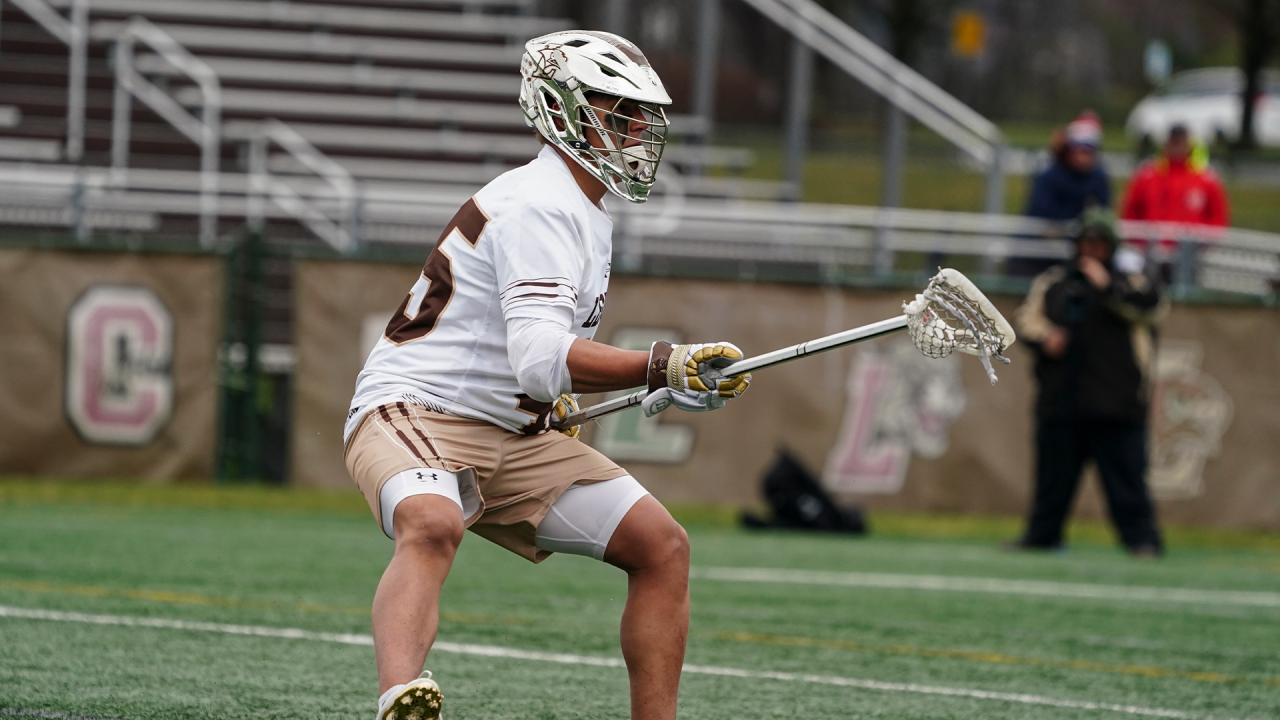
Levi Anderson, A, Saint Joseph’s. The graduate student — one of three Canadians starting for the Hawks on offense — has a team-high 55 points, including 14 in the Atlantic 10 tournament.
Colby Barsz, D, Towson. The Tigers have an elite shut-down option on close defense in the senior, and they’ll need him as they head to the Dome. Also keep an eye on junior Joe Petro, who is coming off an excellent game marking Delaware star Mike Robinson in the CAA final.
Graham Bundy Jr., A/M, Georgetown. It feels like Bundy — a fifth year who has started all 69 games he’s played in — has been playing for the Hoyas forever. He’s in the midst of his fourth consecutive 30-goal season and is a key piece of Georgetown’s offense.
Richard Checo, D, Lehigh. The sophomore tied an NCAA record with eight caused turnovers in the Mountain Hawks’ defeat of Navy on Friday and is the latest in a line of havoc-inducing poles on the Lehigh defense.
Liam Entenmann, G, Notre Dame. Last year’s most outstanding player of the NCAA tournament, Entenmann posted a .714 save percentage as the Irish ripped Virginia and Duke over the weekend at the ACC tournament.
Michael Gianforcaro, G, Princeton. The uber-competitive senior owns a .571 save percentage, the second best of a goalie in the postseason behind Penn State’s Jack Fracyon.
TJ Malone, A, Penn State. Until the Big Ten final, the Nittany Lions’ sixth-year star had at least three points in every game. Malone, one of the top players in the postseason last year, enters the tournament with 40 goals and 34 assists.
Brennan O’Neill, A, Duke. It’s tough to choose anyone besides the reigning Tewaaraton Award winner. The senior commands attention whenever the Blue Devils have the ball and has 49 goals and 25 assists as he begins his final chase for an elusive national title.
Morgan O’Reilly, A, Sacred Heart. The nation’s No. 2 goal scorer 54 (one behind Virginia’s Payton Cormier), O’Reilly has keyed the Pioneers’ school-record 11-game winning streak all the way to the program’s first NCAA tournament berth.
Jake Piseno, D, Albany. Quite possibly the most multifaceted defensive player in the country, Piseno is a perfect fit in a Great Dane program that has never been afraid of pushing the pace. The senior has caused 38 turnovers and scored 13 goals and tacked on five assists.
Connor Shellenberger, A, Virginia. The most outstanding player of the 2021 NCAA tournament, Shellenberger’s last ride with the Cavaliers has included 26 goals and 45 assists. And, of course, he’s been known to save his best for when the weather heats up.
Scott Smith and Beaudan Szuluk, D, Johns Hopkins. There is plenty to highlight on the Blue Jay defense, from goalie Chayse Ierlan to ace short stick Brett Martin. But Smith is steadily superb, and Szuluk is enjoying his best season. None of Hopkins’ last seven opponents have gotten to 12 goals, and in six games against Big Ten opponents, the Blue Jays allowed seven goals in the fourth quarter and overtime.
Joey Spallina, A, Syracuse. Last year’s ACC freshman of the year followed up with 33 goals and 47 assists to help get the Orange back to the postseason. Syracuse’s new 22 has more than lived up to the legacy of his famed number in the front half of his career.
Ryan Stines, A, Utah. The MVP of the Atlantic Sun tournament, Stines scored five goals Sunday against Jacksonville to bump his season total to 47. But the Utes have an abundance of offensive threats, including Jordan Hyde (39 goals, eight assists) and Tyler Bradbury (30 goals, 27 assists)
Alec Stathakis, FO, Denver. The senior is the top faceoff man in the field, ranking second nationally with a .620 winning percentage to provide the Pioneers a hefty possession advantage. He’ll face the second-best faceoff specialist in the field (and the fourth-ranked in Division I) when he battles Michigan’s Justin Wietfeldt (.617) on Saturday.
Justin Tiernan, A, Michigan. The Lehigh import has thrived in Ann Arbor, following up a 46-goal season last year with 53 goals as the Wolverines’ efficient finisher. He personally outscored Penn State in the Big Ten final, notching five goals in a 16-4 triumph.
Luke Wierman, FO, Maryland. The Terrapins lack a clear alpha on offense, and that’s made dominating possession even more important than it was when Wierman throttled opponents two years ago during an undefeated run to a title. Wierman’s .599 faceoff percentage makes him Maryland’s most valuable player.
Michigan keeps following its 2023 script
The Wolverines weren’t satisfied last year just by making the NCAA tournament, building on its Big Ten title by slipping past Cornell 15-14 and moving into the quarterfinals.
That Michigan team was a bit more homegrown than this year’s bunch, meaning it made its run without the benefit of postseason experience. This year’s group, which includes program mainstay Michael Boehm and some key transfer additions, is a bit older. And it’s arguably playing even better than it did early last May.
The Wolverines will be tested by a veteran, stingy Denver defense — but Michigan just won the sort of game the Pioneers have a habit of getting themselves into, turning back Johns Hopkins 10-7 in the Big Ten semifinals. Kevin Conry’s bunch can win in different ways, and it has a real chance to do so again in the Mile High City.
Syracuse’s return to the postseason
The Orange are back in the NCAA tournament after a two-year hiatus to begin Gary Gait’s stewardship of the program. Syracuse’s last postseason experience was an 18-8 humiliation against Georgetown that was followed soon thereafter by John Desko’s retirement. It hasn’t played host to a tournament game since 2018. It hasn’t advanced in the postseason since 2017.
And the caravan of Syracuse fans trekking to a final four site, once a staple in the sport? They’ve spent Memorial Day Weekend at home every year since 2013.
Gait’s first team sputtered to a 4-10 mark, and last year’s 8-7 bunch was unquestionably both young and interesting. This spring has already proven to be the next logical step, with the likes of Christian Mulé, Sam English and Jake Stevens augmenting a young offensive core that includes sophomore Joey Spallina, Michael Leo and Finn Thomson.
Boisterousness has never been in short supply from Syracuse fans, and if the Orange have a couple wins in them this month, the whole sport is going to hear about how the longtime power is back.
Maryland extended its streak of consecutive NCAA tournaments to 21, third-longest ever behind Johns Hopkins (41 in a row from 1972-2012) and Syracuse (24 consecutive from 1983-2006). However, Yale’s seven-year streak in years when the tournament was played and it fielded a team came to an end.
Georgetown and Virginia now share the second-longest active streak at six tournaments. Princeton, with a run of three consecutive NCAA berths, has the next longest.
It isn’t easy for first-year coaches to lead their teams to the NCAA tournament like Denver’s Matt Brown and Lehigh’s Will Scudder did.
In the previous 10 years, only Brad Ross (Bryant 2023), Connor Buczek (Cornell 2022), Craig McDonald (Robert Morris 2022), Mark Miyashita (Canisius 2018), Peter Milliman (Cornell 2018) and Matt Kerwick (Cornell 2014) took teams to the postseason in their first season.
1. More than one road team will win in the first round. Take a look at those teams getting sent to the Nos. 4-7 seeds. Towson has won nine in a row. Michigan just shut down Johns Hopkins and demolished Penn State. Saint Joseph’s is on a 12-game winning streak. And no one in their right mind should want to play Princeton at this point. Toss in Penn State playing a coinflip game at Georgetown, and …
2. Someone will get back to Memorial Day Weekend for the first time since before the pandemic. This is guaranteed to be correct. Denver and Towson last reached the semifinals in 2017. Syracuse hasn’t made it there since 2013. And Michigan’s next trip to the season’s last weekend will be its first. That’s a full quadrant of the bracket, meaning one of them will be making the trip to Philadelphia.
3. Notre Dame will repeat as national champion. No need to complicate things. The Irish have answers everywhere, a championship residue from a year ago and their only stumble came in overtime. Notre Dame isn’t unbeatable, but it hasn’t shown the warts of other teams in the field. Last year, there were three teams a tier above the rest of the field. This year, there’s a clear-cut favorite.
A-
Some of the seeding decisions are debatable, which is precisely what the committee did. There are cases for Syracuse over Johns Hopkins, Virginia over Denver and Penn State over Georgetown, but none of those were easy calls.
Perhaps most impressive was the competitive balance spread throughout the bracket. Just a year ago, the NCAA’s mandate to limit air travel as much as possible sent Bryant to sixth-seeded Johns Hopkins rather than fourth-seeded Maryland or fifth-seeded because the 400-mile radius from Smithfield, R.I., extended to Baltimore but not University Park, Pa., or College Park, Md.
Hopkins wound up facing a lower-ranked opponent than its fellow Big Ten teams and drilled the Bulldogs 22-8. Penn State escaped Princeton by a goal, and Maryland wasn’t so fortunate, as it lost to Army.
So those adjustments can have an impact. This year, the only obvious tweak from the outside looking in is Michigan facing fifth-seeded Denver rather than sixth-seeded Virginia, which gets a visit from Saint Joseph’s instead.
It’s clearly influenced a bit by travel, but it isn’t a massive shift, either.
“We were very excited about it,” Colagiovanni said. “We put a lot of time into it. We put a lot of side-by-side teams when you’re looking at all the numbers we could play with, and we were very, very happy with the way it ended up and we’re very happy with the integrity. That was our goal.”
As it should be. Successfully achieving it isn’t always an easy task. And while there are those quibbles on the margins — namely with the choice of the No. 8 seed — there shouldn’t be many complaints about the finished product.
Patrick Stevens has covered college sports for 25 years. His work also appears in The Washington Post, Blue Ribbon College Basketball Yearbook and other outlets. He's provided coverage of Division I men's lacrosse to USA Lacrosse Magazine since 2010.

